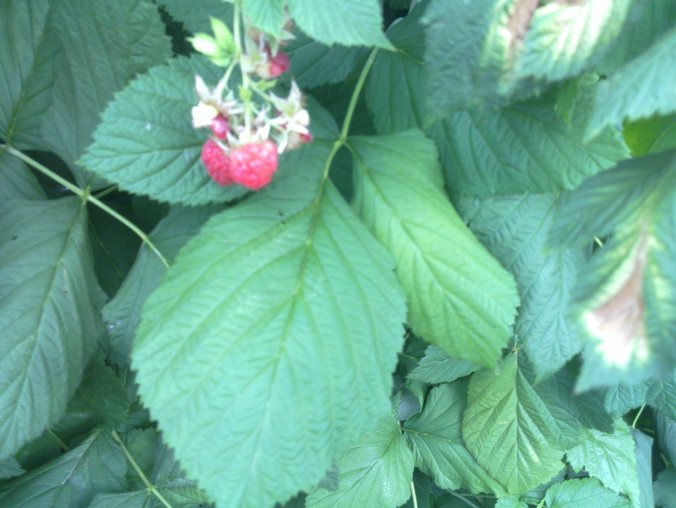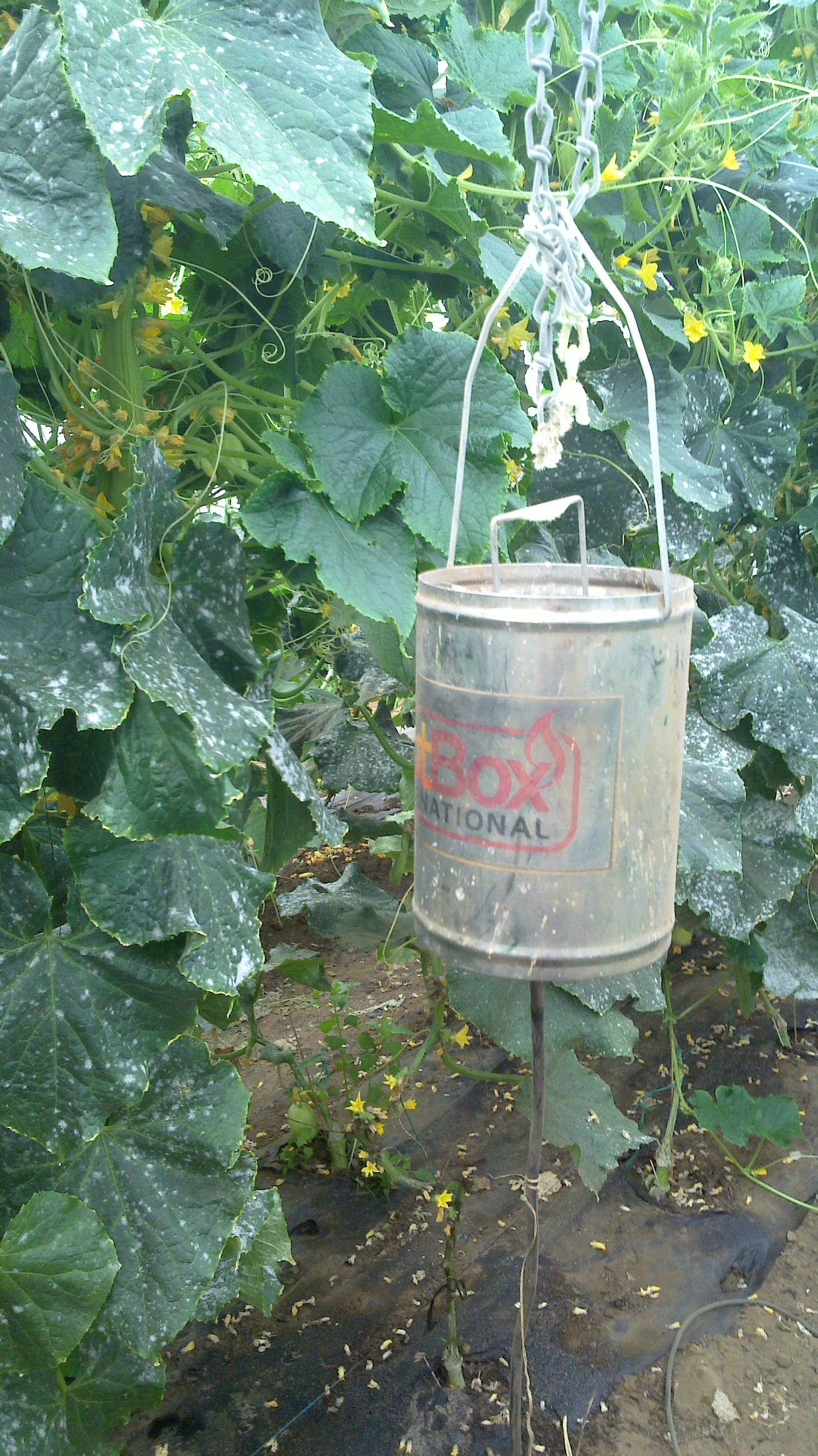One of the hard parts about growing food naturally/organically, is dealing with pests and diseases when they arise. last week, there was an independent crop inspector on the farm. He went through the whole farm listing any problems he found, and the main problem was spidermite infestation on our raspberry, and aubergine leaves. 
Spidermite are very hard to spot in their very early stages, but are visible within a few days – if you know what to look for. Here we can see, healthy leaves directly behind the raspberries, below – the paler green leaf has the very early tell-tale lines/patches of white, where spidermites have been attacking the leaf (you can see the, small perfectly round, insects on the underside of the leaf: with a magnifying glass). Finally to the right we see leaves that have advanced evidence of spidermite infestation; the whole leaves clearly yellow/brown (and spidermites will be clearly visable, on the underside – with the naked eye).
There are two main options for us, to treat these pesky pests: 1) spray them, with organically certified compounds (which are natural based- and not harmful to crop or soil). 2) Use a natural predator that eats the insect, and so keep the population growth in check. We also plant different types of flowers that are a natural deterrent to some insect pests. In our case, the crop advisor recommended using a natural predator insect to keep the spidermites in check (the foliage was quite dense, so spraying would not reach the inner leaves). Also, as we have had this problem before – and used predator insects – there is an existing population of predator insects present on the raspberry leaves (clearly visible on the undersides of leaves: large white insects) , they just need some reinforcements, to help in their battle with the spidermites – and with a little luck should devour the pests, before the pests devour our raspberry leaves.
_____________________________________________________________________________________________
Our second problem of the week, is in one of our cucumber tunnels. The cucumber leaves have developed leaf mould, which in this case is mildew – with round patches of mould covering the leaves. Our solution here is to use sulphur crystals, melted in ‘hotboxes’ as a non-toxic (sulphur: think volcanic activity – or maybe some brands of household matches) airborn treatment. Fingers crossed this will cure our problem.
Growing food without using harmful pesticides, is difficult; but by catching any problems, in their early stages – we can use a variety of natural based weapons to help win each battle. The extra effort is worth it, to bring healthy, great tasting food, to our tables.